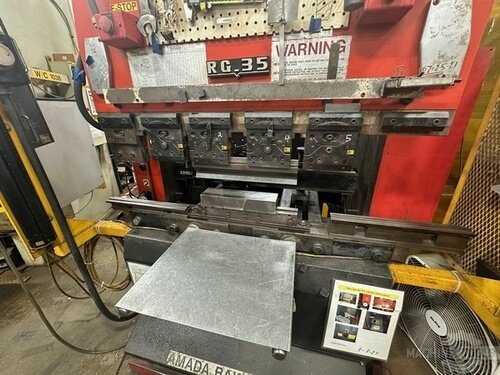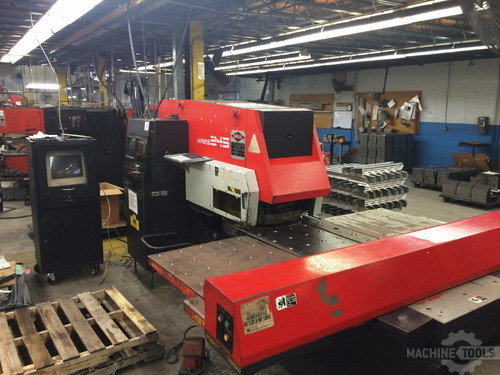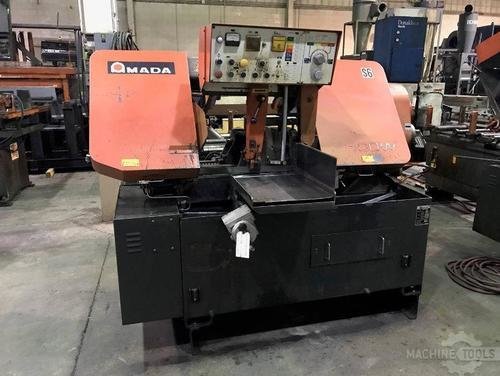I am Joe Ryan, President of Mac-Tech, and my job is to help energy contractors turn capital decisions into competitive advantage. In 2025, utility and industrial power projects will reward shops that combine high tonnage with repeatable precision, and that move quickly on CapEx while protecting cash and tax position. Ermaksan press brakes paired with a disciplined Section 179 strategy give our customers the force, accuracy, and financial velocity to win and deliver at scale. If you want to talk specifics, reach me at joe@mac-tech.com or 414-477-8772.
2025 Energy Build-Out: Bending Capacity and Accuracy as Competitive Advantage
Power generation and grid projects are surging into thicker plates, larger enclosures, and long structural components that demand both tonnage and tight tolerances. The winners will be the shops that can bend 10 to 20 foot parts with consistent angles, minimal rework, and documented quality. That combination shortens project schedules and reduces risk on high-value components like turbine housings, skids, filter frames, ducting, and electrical enclosures.
Accuracy is not just a quality metric. It is a cost and schedule lever. When you hold angles without chasing springback across shifts, you protect upstream laser time and downstream fit-up, welding, and NDT. That boosts OEE, stabilizes lead times, and improves bid confidence on multi-phase build-outs.
CapEx that raises capacity and compresses variation pays back twice. First through throughput, second through fewer field surprises on critical path assemblies. Our role at Mac-Tech is to align the brake, automation, and financing so that ROI starts on day one and grows through the project cycle.
ERMAKSAN POWER-BEND FALCON BENDING MACHING
ERMAKSAN SPEED BEND PRO
Ermaksan Press Brakes for Utility-Scale Work: Tonnage, Precision, and Energy-Efficient Cycles
Ermaksan’s Speed-Bend Pro and Power-Bend Pro series cover the sweet spot for utility-scale fabrication. Configurations span from mid-tonnage models for stainless and aluminum enclosures to high-tonnage, long-bed machines capable of thick carbon steel plate. For extra-long parts, tandem and synchronized multi-machine setups are available, giving you effective bed lengths for wind tower internals, HRSG panels, and large duct sections.
Precision starts with the frame and control. These servo-hydraulic brakes use high-resolution linear scales, CNC crowning, and advanced controllers like Delem to deliver repeatable angles part after part. Multi-axis backgauges enable complex bend sequences and staged tooling for short changeovers. Optical safety systems and sheet followers support safer handling of large, heavy parts without sacrificing cycle time.
Energy efficiency matters when you run long hours on big projects. Ermaksan configurations include variable-speed hydraulic systems that reduce idle energy draw and heat, fast approach with controlled bending speeds, and intelligent standby modes. The result is lower operating cost, more stable oil temperature, and consistent bending performance across shifts.
Section 179 in 2025: Convert Tax Savings into CapEx Velocity and Stronger ROI
Section 179 is built for years like 2025. When you place qualifying equipment into service within the tax year, you can expense up to the annual limit, subject to phase-out thresholds. Paired with bonus depreciation, which under current law is scheduled to be 40 percent in 2025, you can dramatically pull forward tax savings. Always confirm with your tax advisor, as limits and interpretations can change.
The strategy is simple. Use Section 179 to reduce current-year taxable income, then roll those savings into payment schedules that match project milestones. That lowers effective acquisition cost while preserving liquidity for tooling, automation, and working capital. We model cash flows with customers so they can see payback timing based on real parts and real shift assumptions.
Speed to service is critical. If you want 2025 tax treatment, the machine must be installed and producing by year end. Mac-Tech coordinates delivery, rigging, training, and runoff to hit that placed-in-service date so your finance plan and production ramp stay on track.
From Drawings to First-Off Parts: Automation, Tooling Strategy, and Data that Compress Lead Times
Winning lead time starts before the machine ships. We use offline programming with Delem Profile-T to simulate bends, confirm tooling, and validate gauging strategies using your real part files. That eliminates guesswork at install and accelerates first-off approvals on critical components like gusseted frames, long channels, and formed plate weldments.
Tooling strategy is a major ROI driver. Hydraulic clamping with precision-ground punches and dies enables quick changeovers and staged bending across the bed. For thick materials or sensitive alloys, we recommend radius tooling, larger V-openings, and staged setups that reduce handling and minimize marking. Optional in-process angle measurement and sheet followers reduce operator fatigue and variability on heavy parts.
Automation scales the gains. For repeat parts and medium to high volumes, we can integrate a brake-tending robot, conveyors, and smart pallets to stabilize cycle times and run lights-out segments. For high-mix, low-volume energy work, we prioritize fast setup, guided operator interfaces, and data capture from the CNC so supervisors can track first-off quality, part counts, and downtime causes in real time.
Mac-Tech Growth Partnership: Financing, Integration, and Lifecycle Services that De-Risk Adoption
We treat every press brake project as a growth plan. Financing options include $1 buyout leases, FMV leases, step payments, seasonal schedules, and structures designed to align with Section 179 timing. We can package tooling, safety, offline software, and automation into one monthly payment so you raise capacity without straining cash.
Integration starts with scope and ends with acceptance. Our team handles layout, power and air requirements, crane access, rigging, controller configuration, and operator training. We validate bend programs on your parts and define acceptance benchmarks so you know the machine is ready for your workload, not just a test coupon.
Lifecycle support protects ROI. Preventive maintenance, priority service response, spare parts, and remote CNC diagnostics keep uptime high during peak demand. As your mix evolves, we help you add axes, expand tooling libraries, tune crowning, and evaluate when a tandem or second machine will lower total cost per part.
FAQ
What tonnage and bed length should I target for power plant work in 2025?
Match tonnage and length to your thickest plate, longest flanges, and largest enclosures, then add headroom for project variability. Many contractors land between 350 and 1000 tons with 10 to 20 foot beds, with tandem options for very long parts.How do Ermaksan brakes maintain angle consistency across shifts and materials?
They combine rigid frames, high-resolution linear scales, CNC crowning, and advanced Delem controls. Options like multi-axis backgauges, sheet followers, and in-process angle checking further stabilize results across operators and shifts.Can Mac-Tech help me use Section 179 and bonus depreciation effectively?
Yes. We model cash flows, coordinate placed-in-service timing, and structure financing to capture tax benefits. Always validate final tax treatment with your CPA.What does a press brake automation cell look like for energy parts?
Typically a multi-axis robot with grippers for large blanks, a vision or locator system, safety fencing or area scanners, pallets or conveyors, and a CNC interface for program calls and status. We right-size cells for your part mix and floor space.How fast can I go from PO to first-off parts?
Lead times depend on configuration and options, but our parallel path of site prep, offline programming, and tooling kitting typically compresses ramp-up. We plan to have you producing revenue parts immediately after runoff.What data can I capture from the press brake?
Cycle counts, run time, downtime codes, programs used, operator IDs, and part counters. Delem controls support network connectivity and offline programming so you can integrate with scheduling and quality workflows.- Do you support training and long-term service?
Yes. We provide on-site training, refresher courses, preventive maintenance, and priority service. Our goal is stable uptime and predictable cost per part across the machine lifecycle.
Get Weekly Mac-Tech News & Updates







